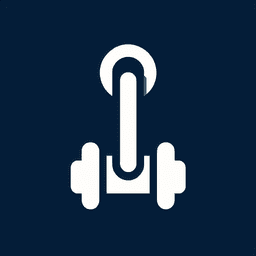
Chainstopper: Definition, Uses, and Examples in Maritime Applications
January 16, 2025
Chainstopper
A chainstopper is a crucial component in maritime operations, particularly in anchoring systems. It is a device used to secure the anchor chain, preventing it from running out when the anchor is deployed or retrieved. Chainstoppers are essential for maintaining the stability and safety of a vessel while at anchor.
Typically, a chainstopper is installed on the deck of a ship, positioned between the windlass and the hawsepipe. It acts as a brake, holding the anchor chain in place and relieving the windlass of the strain caused by the weight of the anchor and chain. This is particularly important in rough seas or when the vessel is at rest for extended periods.
There are different types of chainstoppers, including the "devil's claw," "pelican hook," and "pawl stopper," each designed to suit various chain sizes and operational needs. The choice of chainstopper depends on the specific requirements of the vessel and the conditions it operates in.
In addition to securing the anchor chain, chainstoppers also play a role in safety by preventing accidental release of the anchor, which could lead to damage or loss of the anchor and chain, and potentially endanger the vessel and crew.
Regular maintenance and inspection of chainstoppers are vital to ensure their proper functioning. This includes checking for wear and tear, corrosion, and ensuring that all moving parts are well-lubricated and in good working order.
Understanding Chainstoppers in Maritime Applications
Chainstoppers are essential components in maritime operations, particularly in anchoring systems. They are used to secure the anchor chain, preventing it from slipping and ensuring the vessel remains stationary. This is crucial for the safety and stability of ships, especially in rough sea conditions.
Common Questions About Chainstoppers
What is the purpose of a chainstopper?
A chainstopper is designed to hold the anchor chain in place, taking the load off the windlass. This prevents the chain from running out unexpectedly and helps in maintaining the vessel's position.
How does a chainstopper work?
Chainstoppers work by clamping onto the anchor chain, locking it securely. They are typically used in conjunction with a windlass and are released when the anchor needs to be deployed or retrieved.
What are the types of chainstoppers?
There are several types of chainstoppers, including pelican hooks, devil's claws, and pawl stoppers. Each type has its own mechanism and is chosen based on the specific requirements of the vessel and anchoring system.
Why are chainstoppers important in maritime operations?
Chainstoppers are vital for ensuring the safety and efficiency of anchoring operations. They help in distributing the load of the anchor chain, reducing wear on the windlass, and preventing accidental release of the anchor.
Conclusion
In summary, chainstoppers play a critical role in maritime safety and operations. Understanding their function and types can help maritime professionals choose the right equipment for their vessels, ensuring safe and effective anchoring.




